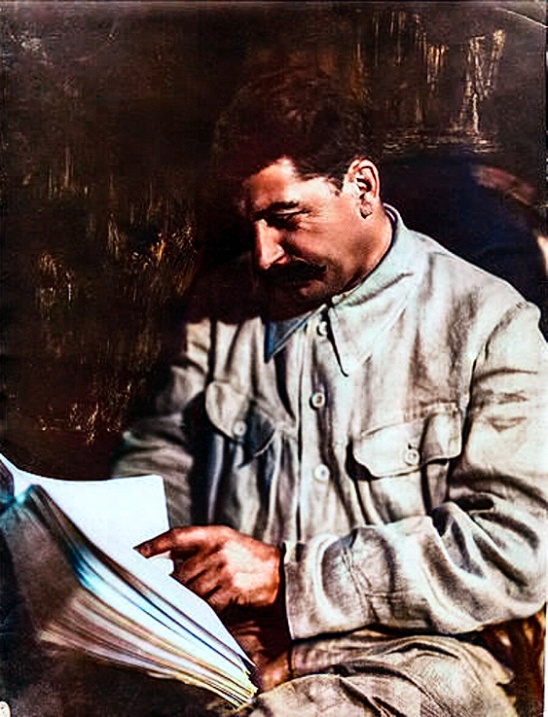Image is of a large protest in the Ivory Coast, sourced from this article in People’s Dispatch.
This week’s megathread is based largely on a detailed article from People’s Dispatch, featuring statements and analysis from Achy Ekessi, the General Secretary of the Revolutionary Communist Party of Ivory Coast (PCRCI), brought to my attention by @jack@hexbear.net’s comment in the last megathread.
The president of Ivory Coast, the 83 year old Alassane Ouattara, is aiming for a fourth term in power while barring out much of the opposition. I can’t really do the all the history of how the situation wound up this way justice in a preamble as it’s fairly complicated (read the article if you are interested), but to summarize, Ouattara is currently the only coherent candidate for the French to support. Back in 2011, the French helped Ouattara overthrow the previous (pan-Africanist) president, Laurent Gbagbo, and then arrested him and sent him to the ICC, and he was then acquitted and released in 2021.
Gbagbo is now running against Ouattara, but his base, the working class, has large swathes that are not present on the voting rolls and so it would be unlikely for him to win. On the opposite side of the spectrum is Tidjane Thiam, a former CEO of the Swiss Bank Credit Suisse, whose base is in the richer strata of the Ivory Coast, which overlaps with Ouattara’s base. He would be more likely to win, but would certainly maintain many Western imperialist relationships. Ouattara, however, has simplified the electoral situation by simply barring both of them from running in the election at all.
Ouattara has, on paper, delivered some amount of economic development to the Ivory Coast. But as expected, most of it is funnelled to the bourgeois, as well as to foreign corporations and governments, while the working class are swallowed by the cost of living crisis. There has been significant infrastructure projects, but these have not only generated massive debt, they also have only really addressed the damage caused by the 2011 civil war and intervention by the French.
The rest of Western Africa has either entirely exited the orbit of France (Niger, Mali, Burkina Faso), are wavering/unstable (Senegal, Benin, Guinea), are beginning to show doubts (Nigeria, Ghana), or are economically weak enough to not be a major blow for the French to lose (Togo, Guinea-Bissau). The loss of the Ivory Coast would be a major setback for French neocolonialism, and be a potent example to nearby countries.
Last week’s thread is here.
The Imperialism Reading Group is here.
Please check out the RedAtlas!
The bulletins site is here. Currently not used.
The RSS feed is here. Also currently not used.
Israel's Genocide of Palestine
Sources on the fighting in Palestine against the temporary Zionist entity. In general, CW for footage of battles, explosions, dead people, and so on:
UNRWA reports on Israel’s destruction and siege of Gaza and the West Bank.
English-language Palestinian Marxist-Leninist twitter account. Alt here.
English-language twitter account that collates news.
Arab-language twitter account with videos and images of fighting.
English-language (with some Arab retweets) Twitter account based in Lebanon. - Telegram is @IbnRiad.
English-language Palestinian Twitter account which reports on news from the Resistance Axis. - Telegram is @EyesOnSouth.
English-language Twitter account in the same group as the previous two. - Telegram here.
English-language PalestineResist telegram channel.
More telegram channels here for those interested.
Russia-Ukraine Conflict
Examples of Ukrainian Nazis and fascists
Examples of racism/euro-centrism during the Russia-Ukraine conflict
Sources:
Defense Politics Asia’s youtube channel and their map. Their youtube channel has substantially diminished in quality but the map is still useful.
Moon of Alabama, which tends to have interesting analysis. Avoid the comment section.
Understanding War and the Saker: reactionary sources that have occasional insights on the war.
Alexander Mercouris, who does daily videos on the conflict. While he is a reactionary and surrounds himself with likeminded people, his daily update videos are relatively brainworm-free and good if you don’t want to follow Russian telegram channels to get news. He also co-hosts The Duran, which is more explicitly conservative, racist, sexist, transphobic, anti-communist, etc when guests are invited on, but is just about tolerable when it’s just the two of them if you want a little more analysis.
Simplicius, who publishes on Substack. Like others, his political analysis should be soundly ignored, but his knowledge of weaponry and military strategy is generally quite good.
On the ground: Patrick Lancaster, an independent and very good journalist reporting in the warzone on the separatists’ side.
Unedited videos of Russian/Ukrainian press conferences and speeches.
Pro-Russian Telegram Channels:
Again, CW for anti-LGBT and racist, sexist, etc speech, as well as combat footage.
https://t.me/aleksandr_skif ~ DPR’s former Defense Minister and Colonel in the DPR’s forces. Russian language.
https://t.me/Slavyangrad ~ A few different pro-Russian people gather frequent content for this channel (~100 posts per day), some socialist, but all socially reactionary. If you can only tolerate using one Russian telegram channel, I would recommend this one.
https://t.me/s/levigodman ~ Does daily update posts.
https://t.me/patricklancasternewstoday ~ Patrick Lancaster’s telegram channel.
https://t.me/gonzowarr ~ A big Russian commentator.
https://t.me/rybar ~ One of, if not the, biggest Russian telegram channels focussing on the war out there. Actually quite balanced, maybe even pessimistic about Russia. Produces interesting and useful maps.
https://t.me/epoddubny ~ Russian language.
https://t.me/boris_rozhin ~ Russian language.
https://t.me/mod_russia_en ~ Russian Ministry of Defense. Does daily, if rather bland updates on the number of Ukrainians killed, etc. The figures appear to be approximately accurate; if you want, reduce all numbers by 25% as a ‘propaganda tax’, if you don’t believe them. Does not cover everything, for obvious reasons, and virtually never details Russian losses.
https://t.me/UkraineHumanRightsAbuses ~ Pro-Russian, documents abuses that Ukraine commits.
Pro-Ukraine Telegram Channels:
Almost every Western media outlet.
https://discord.gg/projectowl ~ Pro-Ukrainian OSINT Discord.
https://t.me/ice_inii ~ Alleged Ukrainian account with a rather cynical take on the entire thing.


the Pivot to Asia, except its Grandpa Simpson walking in, seeing thousands of PLA missiles pointed at him, and walking out https://archive.ph/RfUEf
I fucking love tactical-speak, ’s bits of it are barely even exaggerated, American cops and troops do genuinely talk like this. I’m expanding my operational thought dude, I’m fucking shaping my advantage in time and space!
’s bits of it are barely even exaggerated, American cops and troops do genuinely talk like this. I’m expanding my operational thought dude, I’m fucking shaping my advantage in time and space!
Y’know, somehow I don’t think China’s really planning on, like, chasing the USN around and seizing random Pacific islands. If the US retreats from the closest islands and thus loses the bases that they could most effectively strike China from… then, uh, that’s pretty good for the Chinese? That’d be a pretty funny WW3 actually, the US retreats in order to bait PLAN into chasing them, and China just goes “uh, okay, cool!” and continues on as usual, with the war turning into just occasional skirmishes while Americans at home are going fucking insane from continuous seething (and then we all get nuked, which would be more the
(and then we all get nuked, which would be more the  kind of funny). But yeah, this isn’t an invasion of Russia (with the US in the role of Russia) - a fighting retreat only works if the enemy actually chases you so you can inflict casualties on them during the process, hence the fighting part.
kind of funny). But yeah, this isn’t an invasion of Russia (with the US in the role of Russia) - a fighting retreat only works if the enemy actually chases you so you can inflict casualties on them during the process, hence the fighting part.
The thing about distributing your forces is that you’re buying their survival with the degradation of your own offensive capability - you need a certain degree of mass to actually attack effectively. We see the ground equivalent of this in Ukraine - with drones and omnipresent ISR, it’s difficult to actually mass troops for an attack without them getting struck ahead of time, which in turn relegates combat to mostly small skirmishes, without any big-arrow moves that can make large gains. This was a factor in the failure of Ukraine’s 2023 counteroffensive, where they didn’t have the sufficient mass of troops necessary to penetrate Russian defenses - and the persistent cope among Western commentators was that the Ukrainians just decided not to do that because they were dumb morons, rather than acknowledging that maybe they simply could not do that because of the circumstances of the modern battlefield. There’s also examples of this going all the way back to WW2 - the German defense against the Normandy landings was stifled by Allied air superiority, forcing German mechanized troops to split up in smaller units and travel at night and across smaller roads in order to avoid being spotted and bombed, which slowed their repositioning to Normandy and caused them to arrive piecemeal rather than as whole coherent divisions, and thus be unable to counter-attack anywhere near as effectively.
And the same thing can play out with naval and air operations - if you’re not sending in enough planes and missiles to actually overwhelm the enemy’s air defenses, then you’re not going to get anywhere. If you split up your fleets in smaller units so they can disperse and be less vulnerable, then each one of those new units won’t be able to hit anywhere near as hard. And additionally, resupplying a distributed force becomes much more logistically complex - the resupplies themselves are also vulnerable and need protection. Again going back to WW2, the Allies started out with lots of small convoys over the Atlantic, but later shifted to a smaller number of much larger convoys which, by featuring a greater concentration of ships, were much more capable of defending themselves against German subs. Except if you’ve distributed your force, you don’t have that option - you’ll need lots of convoys (although these days air-supply is at least a lot more viable) to reach all the small units you’ve broken up your forces into.
… continued in comment …
I know he was probably the most anti-communist that ever anti-communisted, but does he not know about Stalingrad? About the entire eastern front of the war he is most famous for commanding forces in?
Also, does he know about his own experience at the Battle of Metz, where his “attack and attack and attack some more” approach amounted to basically the human-wave attacks that Westerners accuse the Soviets of doing? (although admittedly, I couldn’t find a date on that quote, so it may have been from before this)
https://bigserge.substack.com/p/the-last-effort-germanys-final-battle
love to get so fucking angry at how much I suck that I give myself acid reflux
you want me to not waste the lives of thousands of men in stupid attacks? what a fucking pussy
one of the “greatest” American generals btw
btw, this whole “forgotten” phase of the fighting on the Western front I feel is pretty important for understanding how truly important the Soviet war effort was, especially as we’re now inundated with narratives downplaying their contribution and overplaying the Western one. This was late '44 - the Allies were facing a thoroughly depleted Germany, one which had already lost a massive amount of men (and some of their best officers, either to death or to just being fired since they displeased Hitler) and equipment on the Eastern front, and whose industrial output was being heavily reduced by bombardment. They were also trying to get past a defensive line which, while hyped up in propaganda, was in actuality quite sloppy (more from the same article):
And yet… the Allies, despite their massive advantages, were still slowed down substantially and forced to take great casualties overcoming these mediocre fortifications.
Meanwhile, the Soviets were out doing multiple massive offensives a year, over far larger territory, wiping out entire German Army Groups.
Stimson, Marshall, where is the fuel?
No question as to why those forces are in forward positions - the US just decided to put them there since it’d be more exciting for the troops I guess? Maybe they’re in those forward positions so they can actually strike at the Chinese - and if you move them back, you also substantially reduce your capacity to actually, you know, fight. It’s like a boxer who just goes to the edge of the ring and runs away when his opponent closes in - sure, he’s not going to get punched, but you can’t actually win a match that way! Sure, today we’re inundated with missiles and standoff weapons, but those still have limited ranges, even if they are very large. The US wouldn’t be maintaining all these bases if they could just fire off missiles from the continental States with equal effectiveness!
Shooting gallery… but if your forces aren’t there, then, uh… who’s shooting at the Chinese? Like, what even is this argument, genuinely - we’ve been talking about has the US has opportunity to retreat and thus avoid fighting the PLAN in unfavorable engagements or getting bombed with missiles, but if they actually do that, then… the Chinese aren’t boxed in anymore and can actually leave, right? Also, the PLAN being “up against a continent” means they’re much better protected, able to benefit from being under an air defense umbrella that fleets out in the ocean don’t have, and really short resupply routes. Now of course, as per the boxing analogy, you also can’t actually damage the opponent without eventually moving out from your nice and comfy position at home, but… do the Chinese seek that out? Do they want to defeat the USN in open combat out in the middle of the Pacific, or are they simply looking to secure their own seas? Like, this whole thing seems to be based on a scenario where it’s China which attacks and tries to conquer the rest of the Pacific, and the US is playing the heroic role of (ironically) Russia, retreating into their strategic depth and making their opponent pay dearly for every bit of land (or sea) they take. But that’s based on… just nothing beyond vague orientalist notions of “well obviously they want to conquer the world!”? It’s the US which would be on the offense here, not somehow the defense.
I also love how American military discourse must eventually always wrap around to “well sure, we have glaring issues, but, um, actually our enemies are even worse off!”
I’ve seen dozens of videos of 18 -20-something kids in the army talking about wanting to frag their recruiter, I can’t wait to see what heroic “fighting retreat” they put up
I love when my opponent is cornered with an unsinkable aircraft carrier the size of China to their backs.
That definitely gives the US an advantage!
methods of retrograde? is this tactical speak for “retvrn” or what
I think they just mean retreat. Genuinely a baffling term to use in this context, “shape advantages” is at least somewhat comprehensible, but fucking going on about retrogrades like we’re doing astrology really sent me